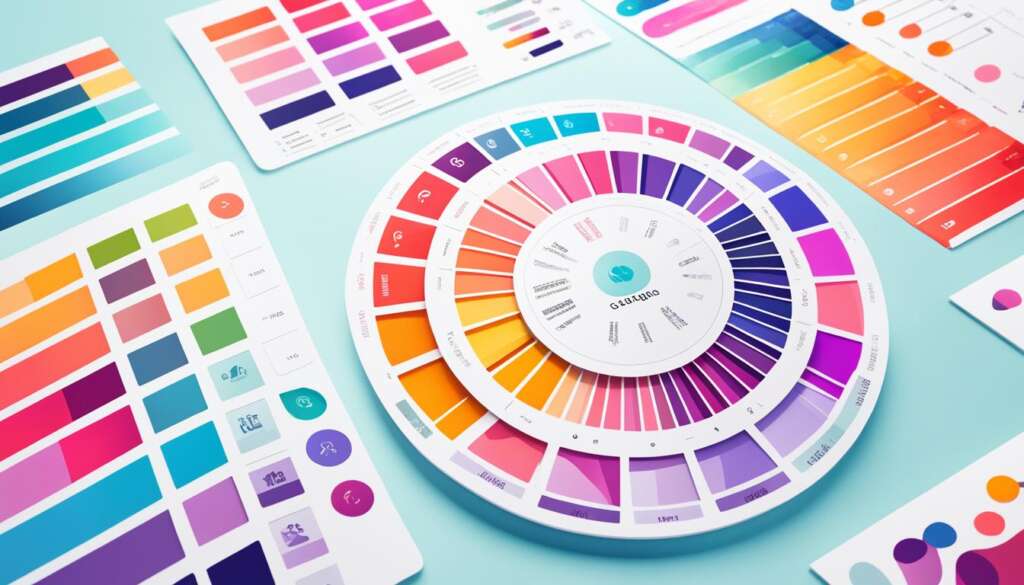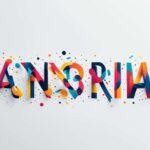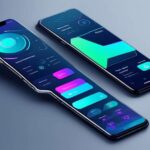Table of Contents
Welcome to the exciting world where creativity meets functionality – the synergy between Graphic Design and UI/UX Practices. In this article, we will explore how the seamless integration of these two disciplines enhances User Experiences and elevates Visual Aesthetics.
As a Graphic Designer and UI/UX Designer, the possibilities are endless. Graphic design involves the art of conveying messages and emotions through stunning visuals, captivating typography, and a vibrant palette of colors. On the other hand, UI/UX design focuses on creating visually appealing and highly functional digital products that delight users.
The combination of graphic design and UI/UX design brings forth a symbiotic relationship that elevates user experiences to new heights. The seamless fusion of these disciplines creates a captivating narrative within the user interface, enhancing the user’s journey and leaving a lasting impression.
Join us as we delve deeper into the world of graphic design and UI/UX practices, unraveling the power of their collaboration in creating visually stunning digital experiences and ensuring user satisfaction.
Graphic Design: Where It All Began
Graphic design plays a pivotal role in the fusion with UI/UX design, serving as its foundational element. It encompasses the art and craft of creating visually appealing designs that effectively convey messages and capture the essence of a brand or idea. The artistry of graphic design is brought to life through the use of visuals, typography, and color, allowing designers to evoke emotions, tell stories, and communicate complex concepts in a visually compelling way.
In the world of graphic design, mastery of tools such as Adobe Creative Suite and the ability to adapt to diverse client needs are essential. Graphic designers have a keen eye for aesthetics and possess the technical skills to transform concepts into tangible designs that resonate with their intended audience. They meticulously select colors, fonts, and images to create harmonious compositions that speak volumes about the intended message or purpose.
The visual impact of graphic design extends beyond mere aesthetics. It plays a crucial role in conveying messages and capturing attention in a saturated digital landscape. Whether designing a logo, poster, website, or mobile app, graphic designers are skilled in creating elements that leave a lasting impression and forge meaningful connections. By harnessing the power of visuals, typography, and color, graphic designers make an indelible mark on the world of design and communication.
UI/UX Design: Adding Functionality to Form
UI/UX design is an essential aspect of creating digital products that seamlessly integrate form and functionality. By building upon the principles of user-centered design, UI/UX designers prioritize the needs and preferences of users, resulting in intuitive and satisfying experiences. Their focus is not only on creating visually appealing designs but also on enhancing the functionality and usability of digital products.
UI/UX design involves a comprehensive process that considers various factors, such as user behaviors, wireframing, prototyping, and user testing. By understanding how users interact with a product, UI/UX designers can strategically design interfaces that meet users’ needs and expectations. From the layout and navigation to the placement of interactive elements, every aspect of the design is carefully considered to ensure a smooth and user-friendly experience.
Wireframing and prototyping play crucial roles in the UI/UX design process. Wireframes act as blueprints that outline the structure and flow of a digital product, creating a visual representation of the user interface. This allows designers to test and refine the functionality of the product before proceeding with the visual design phase.
“UI/UX design is not just about making things look good; it’s about making them work seamlessly for the users.” – Jonathan Ive, Chief Design Officer at Apple
Prototyping takes the wireframe a step further by adding interactivity and user flow. It provides an opportunity to simulate the user experience, enabling designers to gather valuable feedback and make necessary improvements. Iterative testing and refinement based on user feedback are key components of UI/UX design, ensuring that the final product meets the highest standards of functionality and user satisfaction.
With a keen focus on user-centered design, UI/UX designers create digital products that are not only visually appealing but also highly functional and user-friendly. By incorporating user behaviors, wireframing, prototyping, and user testing into their design process, they continuously refine and improve the products’ functionality and usability.
Next, let’s explore how the symbiotic relationship between graphic design and UI/UX design brings together aesthetics and functionality to enhance user experiences and create visually stunning digital products.
| The Benefits of UI/UX Design | |
|---|---|
| Enhanced user satisfaction | Intuitive and user-friendly interfaces |
| Increased user engagement | Seamless user flow and interactions |
| Higher conversion rates | Efficient and effective call-to-action elements |
| Reduced bounce rates | Clear and informative content presentation |
| Improved brand perception | Consistent and visually appealing brand representation |
The Symbiosis of Graphic Design and UI/UX Design
Graphic design and UI/UX design form a synergistic partnership, combining their unique strengths to enhance digital experiences. Let’s explore how these two disciplines come together to create visually compelling and user-centered interfaces.
Visual Storytelling
“Graphic design skills contribute to visual storytelling within the user interface, making the user’s journey more enjoyable.”
Graphic designers are masters of visual communication, using their creativity and design principles to tell stories through images, typography, and color. Within the realm of UI/UX design, their expertise in visual storytelling helps guide users through an engaging narrative that resonates with their emotions and experiences.
Consistency in Branding
“Graphic designers excel in creating consistent branding elements and these elements are seamlessly integrated into UI/UX design for a unified brand experience.”
In order to establish a strong brand identity, consistency is key. Graphic designers bring their keen eye for aesthetics and brand guidelines to ensure that visual elements such as logos, colors, and typography remain consistent across all touchpoints. When integrated into UI/UX design, this consistency delivers a cohesive and immersive brand experience to users.
User-Centered Aesthetics
“The aesthetic eye of a graphic designer also enhances user-centered aesthetics in UI/UX design.”
User-centered aesthetics is all about creating designs that prioritize the user’s needs, preferences, and expectations. By leveraging their expertise in visual composition and user psychology, graphic designers play a crucial role in crafting aesthetically pleasing interfaces that align with user expectations and enhance their overall experience.
Iconography and Illustrations
“Furthermore, graphic designers can create custom icons and illustrations that improve the visual appeal and usability of digital products.”
Icons and illustrations are powerful visual elements that aid in communication and enhance the usability of digital products. Graphic designers possess the skills to create custom icons and illustrations that not only visually enrich UI/UX designs but also improve understanding and interactivity for users.
Problem Solving
Both graphic design and UI/UX design require creative problem-solving skills. Graphic designers excel in finding innovative solutions to visual challenges, while UI/UX designers apply their problem-solving abilities to enhance the functionality and usability of designs. The collaboration between these two disciplines results in holistic problem-solving approaches that benefit the user experience.
By harnessing the power of visual storytelling, consistency in branding, user-centered aesthetics, iconography and illustrations, and problem-solving skills, the symbiotic relationship between graphic design and UI/UX design brings forth captivating and user-friendly experiences.
The Fusion of Art and Science in UI/UX Design
When it comes to UI/UX design, the blending of art and science is essential. This dynamic combination allows designers to create digital experiences that are both visually captivating and scientifically optimized for user satisfaction. Let’s explore the artistic aspect and scientific dimension of UI/UX design in more detail.
The Artistic Aspect: Creativity, Emotion, and Aesthetics
UI/UX design is deeply rooted in artistic expression. Designers harness their creativity to craft visually appealing interfaces that engage users on an emotional level. From color palettes to typography choices, every element is carefully curated to evoke specific feelings and create a cohesive visual experience.
Visual aesthetics play a pivotal role in UI/UX design, as they set the tone for users’ interactions with a product. The way information is visually presented can influence how users perceive its functionality and usability. By blending artistry with design, UI/UX professionals put their creativity to work in service of creating memorable and enjoyable user experiences.
“The artistic aspect of UI/UX design enables us to create digital experiences that connect with users on an emotional level. It’s about telling a story through visuals and sparking delight in every interaction.” – Sarah Johnson, UI/UX Designer
The Scientific Dimension: Research, Testing, and Optimization
While artistry sets the stage, the scientific dimension of UI/UX design brings research and data-driven decision-making to the forefront. Designers rely on user research, testing, and analysis to inform their design choices and optimize the user experience.
Through meticulous research, UI/UX designers gain a deep understanding of the target audience, their needs, and their behaviour. This insight guides the design process, ensuring that each interaction is intuitive, user-friendly, and aligned with user expectations.
Usability testing plays a vital role in the scientific dimension of UI/UX design. Designers conduct user tests to evaluate the effectiveness and efficiency of their designs, uncovering areas for improvement and making data-backed decisions on design changes.
“The scientific dimension of UI/UX design empowers us to design products that are grounded in evidence and user insights, ensuring that every decision we make is purposeful and impactful.” – Mark Thompson, UI/UX Researcher
The Fusion that Drives UI/UX Design
The fusion of art and science is at the core of UI/UX design’s effectiveness and engagement. It is the harmonious balance between artistic expression and scientific rigour that sets outstanding UI/UX designs apart.
By incorporating the artistic aspect, designers infuse digital interfaces with creativity, emotion, and aesthetic appeal. This artistic layer captivates users, drawing them into a seamless narrative that enhances their overall experience.
Simultaneously, the scientific dimension drives UI/UX designers to optimize user experiences through research, testing, and data analysis. This scientific approach ensures that designs are user-centered, intuitive, and aligned with the needs and preferences of the target audience.
The fusion of art and science in UI/UX design unlocks the full potential of digital products, delivering visually stunning experiences that are scientifically optimized for user satisfaction.
| Artistic Aspect | Scientific Dimension | Visual Design | User Experience |
|---|---|---|---|
| Emphasizes creativity, emotion, and aesthetics in UI/UX design | Relies on research, user testing, and data analysis to inform design decisions | Focuses on creating visually appealing interfaces and seamless narratives | Optimizes the overall user experience through evidence-based design choices |
The Impact of Visual Design in UX/UI Design
When it comes to UX/UI design, visual design plays a pivotal role in enhancing user interaction and experience. The use of visual elements such as color, typography, layout, and images can make a significant difference in how users engage with a product and the overall experience they have.
Visual design not only captures users’ attention but also evokes emotions and cultivates a brand’s image. The strategic use of colors can create specific moods and influence users’ perceptions. Thoughtfully selected typography can enhance readability and convey the desired tone. A well-balanced layout ensures that information is presented in an organized and visually pleasing manner. And images add depth and visual interest, providing users with a more immersive experience.
“Good design is obvious. Great design is transparent.” – Joe Sparano
Visual design brings together all these elements to create the overall feel and look of a product interface, making it appealing and interaction-friendly. It sets the stage for users to engage with a digital product by creating an aesthetically pleasing and cohesive design that is both intuitive and delightful to use.
The Role of Visual Design in User Interaction
Visual design has a powerful influence on user interaction. Through the use of visual cues, such as buttons, icons, and navigation menus, users are guided through the product interface, making it easier for them to navigate, understand the functionality, and perform desired actions. Consistency in visual cues, such as standardized iconography and intuitive placement of interactive elements, ensures a seamless and intuitive user experience.
Moreover, visual design helps communicate information effectively. Well-designed data visualizations, charts, and infographics make complex data easier to understand and digest, enabling users to make informed decisions or gain insights more efficiently.
The Impact on User Experience
User experience is greatly influenced by visual design. A visually pleasing interface creates a positive first impression, building trust and credibility. Users are more likely to engage with a product that appeals to their senses and provides an aesthetically pleasing experience. Visual design also helps establish a strong brand identity, reinforcing brand values, and creating a cohesive experience across digital touchpoints.
Visual design is instrumental in creating a memorable user experience. It sets the tone and atmosphere, creates emotional connections, and guides users through a journey that is both enjoyable and meaningful. By considering the principles of visual hierarchy, contrast, and balance, UX/UI designers can create a user experience that is visually engaging, intuitive, and memorable.
The Importance of Visual Design for UX/UI Designers
For UX/UI designers, understanding the impact of visual design is crucial. It allows them to leverage the power of visual elements to create compelling and immersive user experiences. By collaborating with graphic designers and understanding fundamental principles of visual design, UX/UI designers can elevate their designs and create interfaces that are not only functional but also visually appealing.
| Benefits of Visual Design in UX/UI Design | Responsibilities of UX/UI Designers |
|---|---|
| Enhances user engagement | Understand the principles of visual design |
| Elicits emotions and creates a memorable experience | Collaborate with graphic designers |
| Builds brand identity and recognition | Use visual elements strategically |
| Facilitates information communication | Create visually pleasing and cohesive designs |
By embracing the impact of visual design, UX/UI designers can deliver digital products that not only meet user needs but also surpass their expectations, providing a seamless and delightful user experience.
Visual design is not just about making things look good; it is about creating experiences that connect with users on a deeper level, fostering a strong emotional bond and driving user satisfaction. The marriage of visual design and UX/UI design is the key to unlocking the full potential of digital experiences.
Conclusion
The fusion of graphic design and UI/UX design creates a powerful combination of creativity and functionality. By harnessing the synergies between these disciplines, digital products can deliver enhanced user experiences and captivating visual aesthetics. UX/UI design is a unique blend of art and science, where artistic expression and aesthetics merge with research and data-driven decision-making.
UI/UX designers play a crucial role in shaping the future of digital creativity and user experiences. They strike a delicate balance between creativity and empirical research, leveraging their skills to optimize the way users interact with technology. By seamlessly blending art and science, UX/UI designers pave the way for innovative and user-centric digital solutions.
As technology continues to evolve, the demand for UX/UI design expertise will only grow. The ability to create visually appealing and highly functional digital experiences will be key in capturing and retaining user engagement. Through thoughtful design, UX/UI professionals can create seamless journeys that captivate users, leaving a lasting impression and driving business success.
FAQ
What is the intersection between Graphic Design and UI/UX Design?
The intersection between Graphic Design and UI/UX Design allows for the exploration of the synergy between creativity and functionality to enhance user experiences and visual aesthetics in digital products.
What is Graphic Design?
Graphic Design involves conveying messages and emotions through visuals, typography, and color to create visually appealing designs that capture the essence of a brand or idea.
What is UI/UX Design?
UI/UX Design focuses on creating visually appealing and highly functional digital products through user-centered design principles, considering user behaviors, wireframing, prototyping, and user testing.
How do Graphic Design and UI/UX Design complement each other?
Graphic Design skills contribute to visual storytelling within the user interface, create consistent branding elements, enhance user-centered aesthetics, and create custom icons and illustrations that improve the visual appeal and usability of digital products.
What is the fusion of art and science in UI/UX Design?
UI/UX Design incorporates artistic expression and aesthetics with research, user testing, and data-driven decision-making to create effective and engaging digital products.
What is the impact of visual design in UX/UI Design?
Visual design plays a pivotal role in UX/UI Design, enhancing user interaction and experience through elements such as color, typography, layout, and images.
What is the significance of the synergy between Graphic Design and UI/UX Design?
The synergy between Graphic Design and UI/UX Design enhances user experiences and visual aesthetics, creating a powerful combination of creativity and functionality in digital products.













